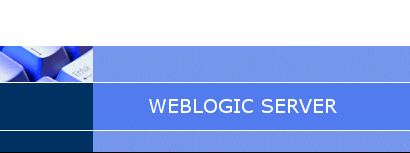
| Sample Applications, Code Examples, and Test Domain

|
| Sample Applications, Code Examples, and Test Domain |
|
|
Getting Started | Samples | Fast Track | Documentation | Oracle Technology Network |
|
Java EE 8 Code Examples
JSON Binding with JAX-RS Sample ApplicationThis example application demonstrates a JAX-RS application that produces and consumes JSON using the Java API for JSON Binding (JSON-B). Run the example | Instructions Java EE Security 1.0 Built-in Database Identity StoreThis example application demonstrates how you can configure a 'DatabaseIdentityStore' to point to a backend database and then use it as an `IdentityStore`. Run the example | Instructions JSON Processing 1.1 New Object ModelThis sample application demonstrates how to use JSON Patch,JSON Merge Patch and JSON Pointer to update a JSON document. Run the example | Instructions Server Push Servlet Sample ApplicationThis sample application demonstrates how to build a HTTP/2 server push request. Run the example | Instructions HTTP Trailer Servlet Sample ApplicationThis sample application demonstrates the usage of HTTP trailer API. The servlet consumes HTTP trailer from request and produces HTTP trailer for the response. Run the example | Instructions Mapping Discovery Servlet Sample ApplicationThis sample application demonstrates how to use HttpServletMapping to handle a series of hyperlinks that explore the various values for the properties of HttpServletMapping. Run the example | Instructions JAX-RS 2.1 Server-Sent EventsThis sample application demonstrates how to use JAX-RS Server-Sent Events (SSE) API. Simple SSE describes how JAX-RS SSE server accepts connections and sends events to client. Broadcast SSE describes how to send events to multiple clients simultaneously. Run the example | Instructions JAX-RS 2.1 Reactive Client APIThis sample application demonstrates how reactive JAX-RS 2.1 client integrates seamlessly with asynchronous JAX-RS resources and CompletableFuture. Run the example | Instructions JSF 2.3 New Additions Sample ApplicationThis sample application delivers you with a non-exhaustive list of smaller samples demonstrating additions that were done to JSF 2.3 which is part of Java EE 8. Run the example | Instructions JPA 2.2 Sample ApplicationThis sample application demonstrates the new features of JPA 2.2, such as injection support in @AttributeConverter, the support for new Java 8 Date and Time API, and the support for retrieving the results of Query and TypedQuery as streams. Run the example | Instructions Asynchronous Events in CDI 2.0This sample application demonstrates how to produce async events and how singleton EJBs can consume these events. Run the example | Instructions Observer Ordering in CDI 2.0This sample application demonstrates how singleton EJBs can consume events according to the priority. Run the example | Instructions Interception Factory in CDI 2.0This sample application demonstrates how to produce a class instance with adding the specified annotation dynamically by InterceptionFactory. Run the example | Instructions |
Sample Applications and Code Examples
JMS 2.0 Simplified APIJMS 2.0 is a completely overhauled release of the API, which applies modern programming techniques to make the use of JMS even easier. Using the simplified API to send and receive messages, dozens of code lines can be cut from JMS applications, making code development and maintainability even easier. The updated API also includes enhancements to message subscriptions, delivery delay, and more. Test DomainUse the WebLogic Server Examples domain to try out your own applications. By default, this directory is located in ORACLE_HOME/user_projects/domains/wl_server, where ORACLE_HOME represents the directory you specified as the Oracle Home when you installed WebLogic Server; for example, C:\Oracle\Middleware\Oracle_Home. You can use the WebLogic Server instance you are running right now to try out your JSPs, servlet or other Java Platform, Enterprise Edition (Java EE) Applications. See the Fast Track Deployment and Administrator Guide. WebLogic Server API ExamplesThe API examples demonstrate Java EE and WebLogic Server features. Each example comes with source code, instructions for building and running the examples, and ant scripts to automate the build process. Managed Coherence Servers ExamplesManaged Coherence Servers provides tight integration between WebLogic Server and Coherence. This integration allows for a simplified and streamlined development and management environments of distributed applications. The examples covers various scenarios using Managed Coherence Servers so that you can easily get started in building and deploying Coherence applications. Some of the examples also cover how various Coherence features can be easily used from inside Managed Coherence Servers. Avitek Medical Records Sample ApplicationThe Avitek Medical Records application is an educational tool for all levels of Java EE developers. It showcases the use of each Java EE component, and illustrates best practice design patterns for component interaction and client development. MedRec also illustrates best practices for developing and deploying applications with WebLogic Server. Complete source code and documentation is available for this application. To launch the Medical Records Application, first shut down the current WebLogic Server instance using the Shut Down Server button in the top right corner of this page. Then run the startWebLogic script from the MedRec domain root directory. By default, this directory is located in ORACLE_HOME/user_projects/domains/medrec. Oracle WebLogic Server How To's, Demos, News, and Community
|
![]()
Copyright (c) 1996,2020, Oracle and/or its affiliates. All rights reserved.
reserved.
Oracle is a registered trademark of Oracle Corporation and/or its affiliates.
Other names may be trademarks of their respective owners.